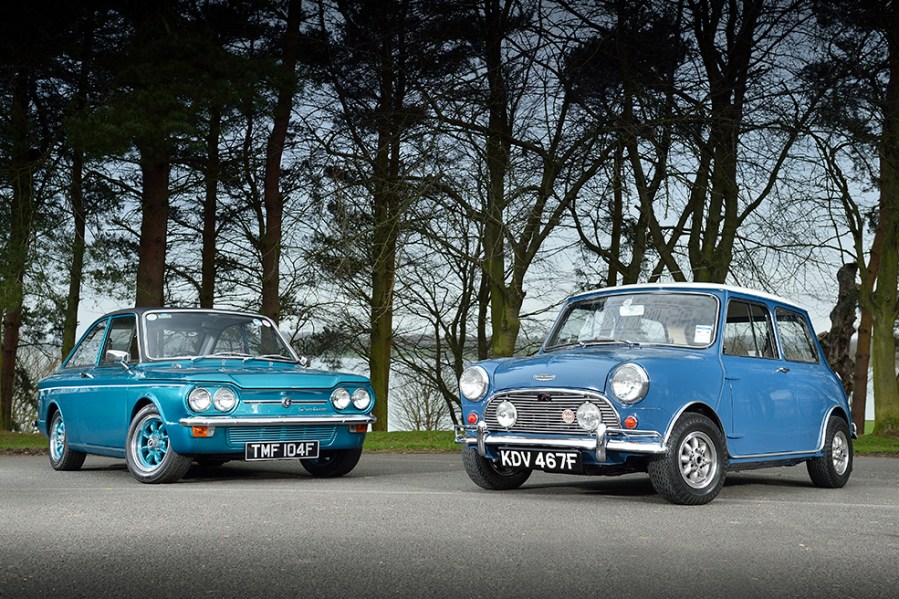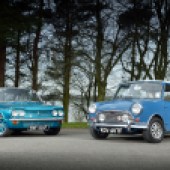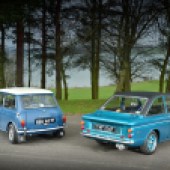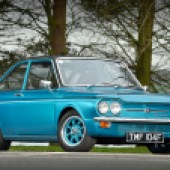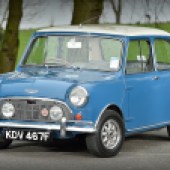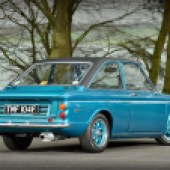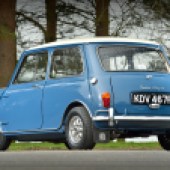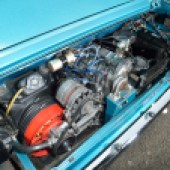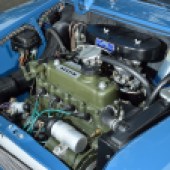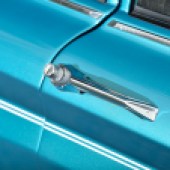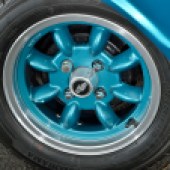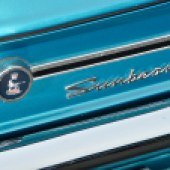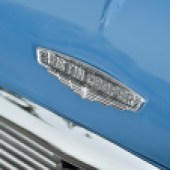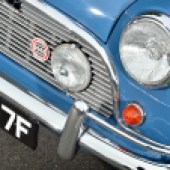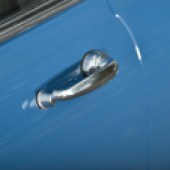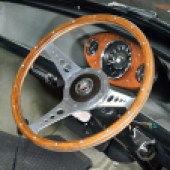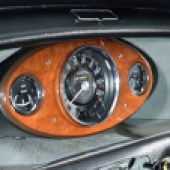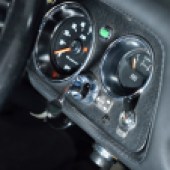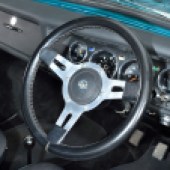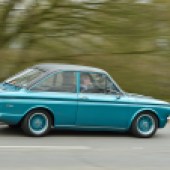We revisit an old rivalry between two small sporty Brits: the iconic Mini Cooper and the lessser-spotted Imp-based Sunbeam Stiletto. Which is the better option as a classic today?
Words: Nigel Clark Images: Matt Woods
In the early 1960s, if a well-heeled youngster wanted a new set of wheels that was a bit flash without being too expensive, the answer usually came in the shape of a small sports car, probably a Sprite or Midget. Then BMC teamed up with F1 racer John Cooper and changed everything.
When Cooper worked his magic by tweaking Issigonis’ cleverly packaged front wheel drive runabout, a whole new class of performance car was created overnight. The launch of the Mini Cooper in 1961 gave the world a car that matched a sports car’s straight line performance but, inheriting the exceptional handling of the basic Mini, could easily beat the sports cars through the bends. The fact that the Cooper also offered four seats was another benefit, though maybe not uppermost in the minds of young buyers. Arguably the Mini Cooper’s success created the market for the hot hatchbacks that emerged in the following decades.
The Rootes Group wasn’t about to sit back and miss out on a slice of this new-found action. Having launched the Hillman Imp as a Mini rival in 1963, three years later an Imp Sport hit the market followed by the Stiletto, badge engineered under Rootes performance brand of Sunbeam.
So by the mid-1960s the aspiring buyer in search of a sporty saloon had a choice between BMC and Rootes products. Contemporary sales figures suggest the Mini won the contest hands down but is that really a fair representation of the Imp’s capability? Today we’re comparing a Mini Cooper Mk1 and a Series 1 Sunbeam Stiletto. Let’s find out how these rivals fare some five decades later.
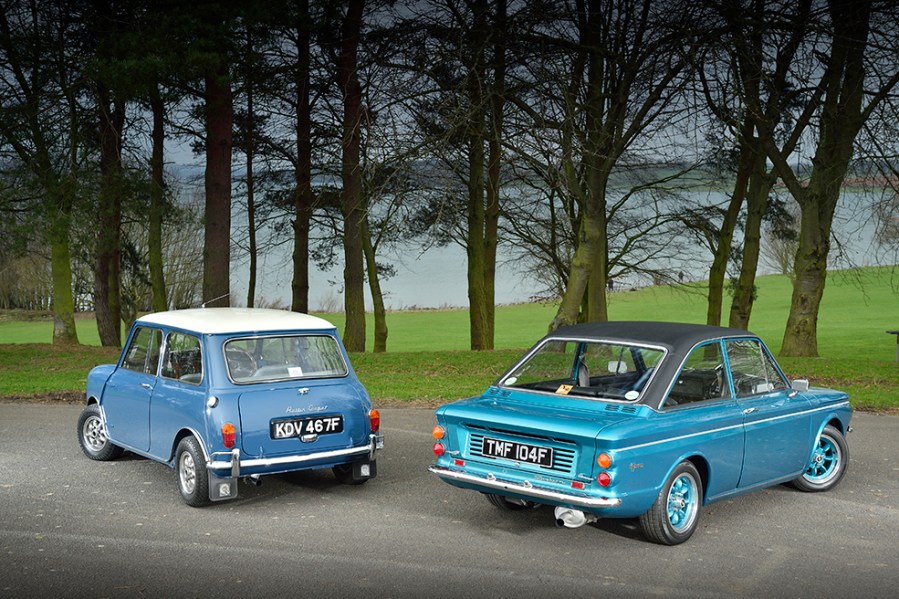
The Mini Cooper was an instant success and over 100,000 cars were sold in the first ten years, while sales of the more basic Mini models benefitted from the glamour bestowed by the Cooper and its widespread competition success. The Mini Cooper went on to become a true 1960s phenomenon, and today can make a great choice for anyone looking for a classic that’s simultaneously fun and easy to live with. There was a potentially confusing array of different Cooper models, so a little background is valuable for new buyers about to dive into the market.
When launched in 1961, the Cooper had a 997cc engine which was in effect a longer stroke 850 unit, fitted with twin SU carbs and longer dwell camshaft to up the power output to 55 bhp. This specification only lasted until 1964 when a new shorter stroke 998cc engine was used. The 998 engine continued without significant change until the Cooper was axed in 1970. It’s stronger, has a big valve free-flowing cylinder head but a tamer camshaft profile to achieve exactly the same peak power figure as the 997.
In 1967 the 998cc Cooper evolved from Mk1 to Mk2, identified by its bolder slatted grille and rectangular rear light clusters. To further confuse the unwary, from 1963 a more powerful version – the Cooper S – was also available with engine sizes up to 1275cc. Potential buyers should note that the 998 is the most numerous of all the Coopers and it’s this model we’re focusing on today.
With extra power under the bonnet, better brakes were needed. The original drums were ditched and all Coopers had seven-inch disc brakes up front as standard issue, or 7.5 inches for the S versions. The small discs of the Cooper weren’t actually any more effective than standard drums, so over the years many Coopers have been upgraded with larger S discs. A contrasting roof colour, closer gear ratios and Cooper badges completed the transformation from basic transport to desirable sportster. Suspension, interior and pretty much everything else was carried over from the 850 base car.
Barry Chipman’s Island Blue Cooper is a late Mk1, built at Longbridge in July 1967. He’s owned it for 25 years and says of his purchase: ‘I was looking for a Cooper S and the seller didn’t seem to know which model he had. I recognised what it was but liked the car so much I bought it anyway.’ Did we mention that the range of Coopers can be a source of confusion?
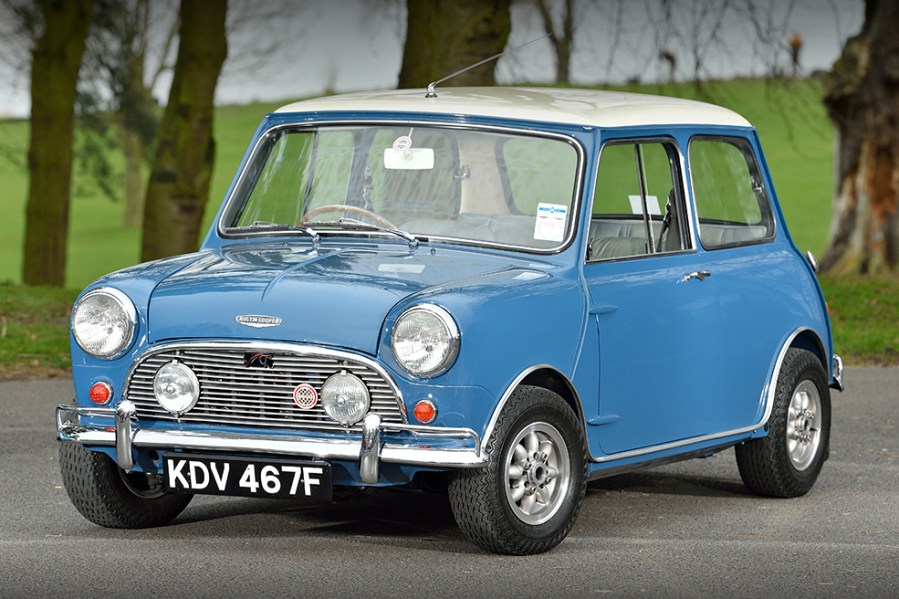
Barry ran his car for five years, repairing as necessary but eventually deciding to restore it. He did all the work himself except for painting and 20 years on, the car still looks and drives like new. His Cooper is a standard 998 but does benefit from larger S disc brakes, Superlite alloy wheels and reclining sports seats which were an ultra-desirable factory option. These days he tries to drive it as often as possible, with plenty of trips to car shows up and down the country during the summer months. Such regular use makes the car’s excellent condition all the more remarkable.
The Cooper appears purposeful with contrasting white roof and alloy wheels; it looks fast just standing still for our camera. Inside, the cabin is pleasant with the light trim pattern contributing to an airy feel. It may only be ten feet long on the outside but it feels bigger inside. The front seats are supportive and the driving position is instantly familiar with the big steering wheel immediately ahead.
The Cooper starts as easily as you’d expect of a well-fettled Mini, with a hint of crispness from the exhaust. It pulls away promptly, though with some whine from the crash first gear. Change up to second using the nicely placed remote lever and transmission noise is instantly reduced to a slight hum from the transfer gears which take power from clutch to gearbox.
The Cooper accelerates well, fine for keeping up with modern traffic and with disc brakes from an S, it stops easily too. The hydrolastic suspension gives a firm, slightly choppy ride but it’s always comfortable. Mini handling has been praised so many times before but the clichés still apply: chuckable, corners on rails – it’s all true. The engine is flexible, happy to pull at 20mph in top gear, making down-changes for roundabouts optional rather than essential.
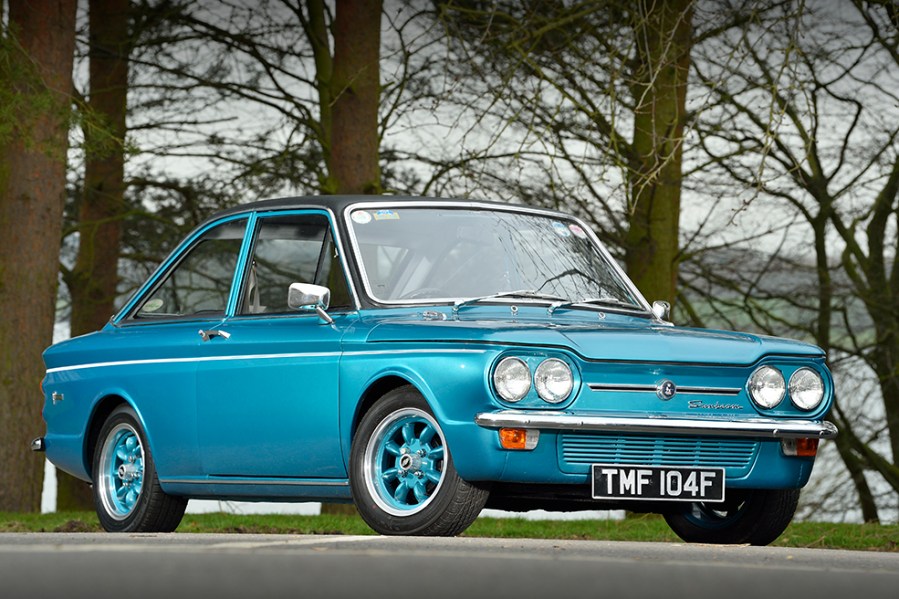
Our Stiletto is one of several sporty badge-engineered Hillman Imp derivatives, and was a natural rival to the Mini Cooper in the showrooms of the Sixties. The Imp’s history is less well-known than the Mini, so let’s take a look back to its birth.
When Rootes set about designing a small car for the Sixties, the organisation made several unconventional, not to say downright courageous decisions. The car’s rear-mounted engine and rear wheel drive layout flew in the face of the strengthening front wheel drive revolution. Then came the factory; rather than build the Imp in their existing Ryton plant, Rootes chose to set up from scratch at Linwood just outside Glasgow. The new facility was supported by government grants, aiming to create new jobs for unemployed ship builders from the yards on the Clyde.
Launching in 1963, the Imp was late to the small car market, where the Mini was an established leader. By comparison the Rootes Group product was mechanically advanced with an 875cc aluminium overhead cam engine and it offered more interior space. It should have been a great success but with less than 500,000 cars made during a thirteen year production run, the Imp never met sales expectations. Rootes was financially wounded, forcing a sale to Chrysler in 1967. The new American owner eventually pulled the plug on Imp production in 1976. It’s a bitter irony that at the heart of this commercial failure was a range of advanced and very well engineered cars.
Rootes naturally wished to boost Imp sales by introducing performance variants. Two sports versions hit the showrooms simultaneously in 1966, the Singer Chamois Sport and the Sunbeam Imp Sport. Sunbeam then added the Stiletto in 1967. To breathe more performance into the Imp, Rootes engineers hiked the power output of the standard car by 40 per cent, achieved by raising the compression ratio, fitting a longer dwell camshaft and twin Stromberg carburettors. The standard drum brake arrangement was retained and uprated with a vacuum servo. Twin headlights and a fastback roof announced to the world that the Stiletto was something special.
Brian Dann is the longer term owner of the 1968 Turquoise Blue metallic Stiletto in today’s line up. In his ownership for 16 years, it’s almost exactly to factory specification, though the engine breathes through a Weber 28/36 DCD twin-choke carb which was a popular period modification. Brian has restored his car not once but twice, since for years it was his only means of transport, clocking up many miles in all weather conditions. Following the second restoration, his Stiletto is in near showroom fettle and nowadays is driven weekly rather than daily, with frequent trips out to summer car shows.
Standing beside the Cooper, the Stiletto certainly looks the larger car. Inside, the seats are comfortable and there’s a little more shoulder and head room, though black trim precludes the same spacious feel as the Mini. The Stiletto’s dash places major instruments and switches in from of the driver, unlike the Mini’s central binnacle. Start the engine and there’s no mistaking its rear location. While not obtrusive, induction and exhaust notes combine with sporting intent. Gear selection is reasonably precise given the distance from lever to gearbox and the Stiletto pulls away smoothly with a light clutch action.
On the move, acceleration is brisk but to get the best from its buzzy overhead cam engine, more revs are needed than with the tractable Cooper. Steering is precise and coil sprung independent suspension all round soaks up undulations well, with a slightly smoother ride than the Mini. It’s a different driving experience but there’s a definite sporting feel.

Mini Cooper vs Sunbeam Stiletto: our verdict
The whole world loves a Mini, especially when it’s a Cooper, so no rival has a chance – plus a Cooper will give lots of fun and is easy to maintain. But why not dare to be different? A Stiletto stands out from the crowd and today offers much better value.
The Stiletto is certainly a driver’s car and though not quite as quick to 60 mph as a Mini Cooper, it’s perfectly capable in modern traffic. If you’re not familiar with the performance versions of the Imp, you will be favourably impressed. The Mini, meanwhile, is a great package: stylish and decently quick. Excellent spares and club back up make it easy to live with. The S may be the must-own model if you’re looking for Mini bragging rights but don’t dismiss the 998 Cooper – it’s a bundle of fun.
In reality, if you’re looking for a 1960s small sports saloon, both of these contenders deserve serious consideration.

